What’s Up?
What’s up? Lots.
Sunday and Monday were the two worst pelican mornings I have ever experienced in La Jolla. But we did well both days with the Brandt’s Cormorants and had a ton of fun at the Crevice with a small flock of Royal Terns. Sunday afternoon was a bust at my #2 favorite beach as the tide was too high but we did get some Lesser Scaups late in the day. Monday afternoon was loaded with pelicans everywhere. I am getting better each day with the SONY gear as I get used to handling it and zooming in and out. I am in the process of figuring out why I am underexposing so much with the A9 … I have ordered an A9, the 100-400, and both teleconverters. You will be learning why every other day on the blog starting with today’s post …
IPT Updates
Unsolicited via e-mail from multiple IPT veteran Donna Bourdon
Thank you Artie for another amazing trip! The setting and the access to such spectacular wildlife was more than we could have hoped for. And you, yourself are remarkable. I am always touched by your selflessness in sharing your professional talent and knowledge. Not many working pros would be willing to share their intellectual property as you do. And the group experience was such fun. It was good to make new friends and enjoy food, fun and fellowship together! I hope to meet up with everyone again soon for another “over the top” adventure. with love, Donna
Unsolicited via e-mail from IPT veteran Eugen Dolan
Arthur, Thank you very much for your overwhelming infectious enthusiasm that helped get me up on some mornings. Also, your ability to express yourself- and explain in great detail why you like or may not like an image – was very helpful in allowing me to better analyze my images. Eugen
I have room for two folks on the spoonbill boat and still need three or four folks for the Galapagos trip. If you would like to explore the possibilities, please get in touch via e-mail; no reasonable offer will be refused.
- The 2019 Hooptie Deux/Roseate Spoonbill Boat 3 1/2 DAY IPT — FEB 16 thru 19, 2019: $2599.00. Limit: 5 photographers/Openings: 2.
- The New, Expanded 2019 UK Puffins, Gannets, & Red Kites IPT. Thursday June 27 (from EDI) through Tuesday, July 9, 2019 (on the ground; fly home on Wednesday July 10.): $9,999. Limit 10 photographers/Openings: 9. This trip needs four to run. Co-leader: Peter Kes.
- The GALAPAGOS Photo Cruise of a Lifetime IPT/The Complete Galapagos Photographic Experience. July 23 to August 6, 2019 on the boat. 13 FULL and two half-days of photography: $14,499. Limit: 12 photographers/Openings: 4.
BIRDS AS ART
BIRDS AS ART is registered in the U.S. Patent and Trademark Office.
Selling Your Used Photo Gear Through BIRDS AS ART
Selling your used (or like-new) photo gear through the BAA Blog is a great idea. We charge only a 5% commission. One of the more popular used gear for sale sites charged a minimum of 20%. Plus assorted fees! Yikes. They went out of business. And e-Bay fees are now up to 13%. The minimum item price here is $500 (or less for a $25 fee). If you are interested please scroll down here or shoot us an e-mail with the words Items for Sale Info Request cut and pasted into the Subject line :). Stuff that is priced fairly — I offer pricing advice to those who agree to the terms — usually sells in no time flat. Over the past year, we have sold many dozens of items. Do know that prices on some items like the EOS-1D Mark IV, the old Canon 100-400, the old 500mm, the EOS-7D and 7D Mark II and the original 400mm DO lens have been dropping steadily. Most recently the price of used Canon 600mm f/L IS II lenses have been dropping like a rock with the introduction of the 600 III. You can always see the current listings by clicking here or on the Used Photo Gear tab on the orange-yellow menu bar near the top of each blog post page.
Money Saving Reminder
If you need a hot photo item that is out of stock at B&H, would enjoy free overnight shipping, and would like a $50 discount on your first purchase, click here to order and enter the coupon code BIRDSASART at checkout. If you are looking to strike a deal on Canon or Nikon gear (including the big telephotos) or on a multiple item order, contact Steve Elkins via e-mail or on his cell at (479) 381-2592 (Eastern time) and be sure to mention your BIRDSASART coupon code and use it for your online order. Steve currently has several D850s in stock along with a Nikon 600mm f/4 VR. He is taking pre-orders for the new Nikon 500 P and the Nikon Z6 mirrorless camera body.
Bedford’s Special
Purchase a NIKKOR 180-400 super-telephoto zoom lens and choose either a GITZO GT2542LS SYSTEMATIC TRIPOD (a $930 value) or the WIMBERLEY GIMBAL/WH-200 w/ custom plate (a $694 value) at no charge when you purchase the 180-400!
Gear Questions and Advice
Too many folks attending BAA IPTs and dozens of photographers whom I see in the field and on BPN, are–out of ignorance–using the wrong gear especially when it comes to tripods and more especially, tripod heads… Please know that I am always glad to answer your gear questions via e-mail. Those questions might deal with systems, camera bodies, accessories, and/or lens choices and decisions.
|
|
|
This image was created on January 26, my first day using the SONY gear. I used the hand held Sony FE 100-400mm f/4.5-5.6 GM OSS lens with the Sony FE 1.4x teleconverter (at 560mm), and the beyond remarkable Sony Alpha a9 Mirrorless Digital Camera. ISO 1600: 1/2000 sec. at f/11 in Manual mode. AWB at 7:31am on a clear day. Pacific race Brown Pelican/classic head and shoulders portrait |
SONY Gear Does Just Fine in San Diego
As I said here in the last blog post, the SONY rig is pretty darned good. I am not sure why I was at ISO 1600 and f/11 for the image above. I should have been at ISO 800 at f/8 at 1/1000 sec. or even ISO 400 at f/8 at 1/500 sec. But the truth is, SONY’s ISO 1600 is about at good as ISO 400 with most dSLRs …
My Initial Thoughts on the SONY Stuff
The Good
1- The camera is very easy to operate and is comfortable in my hands without the grip. That said, Patrick Sparkman did a great job of setting up the MENU items that needed to be set. Thank you Patrick. I was able to learn to adjust the settings in less than two minutes.
2- AF performance blows away Nikon by a greater degree than Nikon blows away Canon. At least for me. And for Patrick. The incoming Brand’t Cormorants are as difficult a flight subject as I have ever encountered. Canon was hopeless. Nikon did OK at times but many of the images were unsharp. Once you are tracking with the SONY stuff every image is surreally sharp. See Wednesday’s blog post. Initial focusing acquisition seems to be instantaneous.
3- AF performance with both teleconverters is beyond astounding.
4- There is never a need to micro-adjust. AF covers virtually the entire frame and there is no drop-off even when you pick an AF point on the edge of the frame … And that is true with either TC in place!
5- The viewfinder is blindingly bright.
6- The A9 is super fast, about 15 fps with tracking AF (AF-C) with compressed RAWs, and 13 fps with uncompressed RAWs. It is difficult to take fewer than four images once you press the shutter button.
7- The zoom power ratio is great; you can zoom from 100 to 400 with about a 90 degree rotation.. There is no need to re-adjust your grip when you zoom all the way in or all the way out.
8- The controls are easier to use than with Nikon (especially when changing the Focus Area).
9- Moving the AF patterns or points around is fast and easy with the small joystick.
10- I went through a battery only once.
11- High ISO performance is outstanding. See Image #2 below.
12- OSS (Optical Steady Shot) is at least the equal of Canon’s IS and Nikon’s VR technology.
13- There is no mirror black out. When shooting flight, the first image flickers for a milli-second and the you see the bird the whole time. In just three days this has helped me to improve my panning skills by light years as I able to simply follow the bird while keeping it in the frame …
14- The dynamic range and the exposure latitude are fantastic. You can under-expose almost with impunity and then open the image up during post-processing without paying much of a price. affect.
15- Despite the 24mp file size, fine feather detail (FFD) borders on the unbelievable …
16- The minimum focusing distance is the same as the MFD of the Canon 100-400 II, .98 meters.
The Bad
1- The thumb wheel should be larger.
2- It is not possible to pre-focus manually … If you know how to do that, please leave a comment.
3- You have to snap the latch on the battery cover shut after putting in a battery. It should be spring-loaded …
4- With some static subjects AF is blind and the camera does not even attempt to focus. When that happens, I point the lens down at a rock and all is well. That likely happens when the last focusing distance is hugely different from the distance to the subject.
5- With no mirror, sensor dust can be a serious problem …
|
|
|
This image was also created on January 26, my first day using the SONY gear. I used the hand held Sony FE 100-400mm f/4.5-5.6 GM OSS lens (at 400mm) and the beyond remarkable Sony Alpha a9 Mirrorless Digital Camera. ISO 5000: 1/1000 sec. at f/5.6 in Manual mode. AWB at 5:13pm in total shade. Image #2: Pacific race Brown Pelican/young bird in a squabble |
ISO 5000
As noted above, the high ISO performance, the dynamic range, and the exposure latitude of the A9 are fabulous. The original for Image #2 was at least 1 1/2 stops under-exposed. NeatImage cleans up the high ISO images very nicely. The RAW file for this image was a full two stops under-exposed out of the camera.
Your Favorite
Which of todays’ featured images is your favorite? Please let us know why. Folks have been very lazy recently 🙂
|
|
|
Fort DeSoto in spring is rife with tame birds, many in full breeding plumage. Click on the composite to enjoy a larger version. Clockwise from upper left around to center: Laughing Gull landing on head of Brown Pelican, Laughing Gull in flight, Reddish Egret sunrise silhouette, Great Blue Heron with needlefish, Yellow-crowned Night Heron with ghost crab, Roseate Spoonbill, Sanderling in breeding plumage, and white morph Reddish Egret in glorious breeding plumage. |
The 2019 Fort DeSoto Spring IPT/THURS 18 APRIL through the morning session on SUNDAY APRIL 21, 2019: 3 1/2 DAYS: $1549. Limit 8/Openings: 5. Meet and greet at 7PM on the evening of WED 17 APRIL.
Fort DeSoto, located just south of St. Petersburg, FL, is a mecca for a great variety of migrant shorebirds, gulls, terns, and passerines in Spring. Many of the gulls and terns will be courting and copulating. There the migrants join hundreds of Florida resident egrets, herons, night-herons, and pelicans on the T-shaped peninsula. We should get to photograph one of Florida’s most desirable shorebird species: Marbled Godwit. Black-bellied Plover and Willet are easy, American Oystercatcher almost guaranteed. Great Egret, Snowy Egret, Great Blue Heron, Tricolored Heron, and White Ibis are easy as well and many of those will be in their spectacular breeding plumages. Yellow-crowned Night-Heron is a strong possibility. We may get to see and photograph the amazing heron/egret hybrid that has been present for three years. And we should enjoy some great Brown Pelican flight photography. In addition, Royal, Sandwich, Forster’s, and Caspian Terns will likely provide us with some good flight opportunities as well. Though not guaranteed, Roseate Spoonbill and Wood Stork might well be expected. And we will be on the lookout for a migrant passerine fallout in the event of a thunderstorm or two. Yikes, I almost forgot to mention that nearly all of the birds are ridiculously tame!
|
|
|
Yes, Fort DeSoto in spring is rife with tame birds, most in breeding plumage. Click on the composite to enjoy a larger version. Clockwise from upper left around to center: breeding plumage Dunlin, dark morph Reddish Egret displaying, Laughing Gull vertical front-end portrait, Laughing Gull with prey item, landing on head of Brown Pelican, breeding plumage Royal Tern displaying, Royal Terns — pre-copulatory stance, Laughing Gulls copulating, Laughing Gull head portrait, breeding plumage Sandwich Tern with fish, and a rare treat, a breeding plumage White-rumped Sandpiper. |
Just some of the stuff you will learn …
On the IPT you will learn basics and fine points of digital exposure and to get the right exposure every time after making a single test exposure, how to approach free and wild birds without disturbing them, to understand and predict bird behavior, to identify many species of shorebirds, to spot the good situations, to choose the best perspective, to see and understand the light, and to design pleasing images by mastering your camera’s AF system. Most importantly you will surely learn to evaluate wind and sky conditions and understand how they affect bird photography. And you will learn how and why to work in Manual mode (even if you’re scared of it).
|
|
|
Again, Fort DeSoto in spring is rife with tame birds, most in breeding plumage. Click on the composite to enjoy a larger version. Clockwise from upper left around to center: Laughing Gull in flight, Yellow-crowned Night-Heron, Sandwich Terns copulating, Roseate Spoonbill, Great Egret with reflection, breeding plumage Short-billed Dowitcher, American Oystercatcher, Royal Tern, white morph Reddish Egret, and Snowy Egret in marsh. |
What we do
There will be seven shooting sessions in all: four 3+ hours morning session and three 2 1/2 hour afternoon sessions. There will be a Photoshop/image review session during or after lunch (lunch is included) on each of the three full days. That will be followed by Instructor Nap Time.
The best airport is Tampa (TPA). Once you register, you will receive an e-mail with the hotel/lodging information.
|
|
|
You got it, Fort DeSoto in spring is rife with tame birds, most in breeding plumage. Click on the composite to enjoy a larger version. Clockwise from upper left around to center: Roseate Spoonbill, immature Brown Pelican in flight, the heron/egret hybrid, American Oystercatcher feeding, immature Royal Tern on railing, Great Egret morning silhouette, Black Skimmer in surf, and underside head portrait of Great Blue Heron. |
Signing Up
A $500 deposit is due when you sign up and is payable by credit card. Balances must be paid by check after you register. Your deposit is non-refundable unless the IPT sells out with eight folks so please check your plans carefully before committing. You can register by calling Jim or Jennifer during weekday business hours at 863-692-0906 with a credit card in hand or by sending a check as follows: make the check out to: BIRDS AS ART and send it via US mail here: BIRDS AS ART, PO BOX 7245, Indian Lake Estates, FL 33855. You will receive a confirmation e-mail with detailed instructions, clothing, and gear advice. Please remember that the meet and greet will take place on the evening of WED 17 APRIL. Please shoot me an e-mail if you plan to register or if you have any questions.
|
Folks attending this IPT will be out in the field early and stay late to take advantage of sunrise and sunset colors. Click on the composite to enjoy a larger version. Clockwise from upper left to center: Long-billed Curlew, juvenile Tricolored Heron, Marbled Godwits, Great Blue Heron, juvenile Pectoral Sandpiper, Wood Stork, smiling Sea Scallop, Ruddy Turnstone scavenging needlefish, Great Blue Heron sunset silhouette at my secret spot, and southbound migrant tern flock blur. |
Early and Late
Getting up early and staying out late is pretty much a staple on all BIRDS AS ART Instructional Photo-Tours; on this particular trip we will get lots of sleep as the days are short. Being in the field well before the sun comes up and staying out until sunset will often present unique photographic opportunities, opportunities that will be missed by those who need their beauty rest. I really love it when I am leaving the beach on a sunny morning after a great session just as a carful or two of well-rested photographers arrive.
Help Support the Blog
Please help support my efforts here on the blog by remembering to click on the logo link above each time that you shop Amazon. That would be greatly appreciated. There is no problem using your Prime account; just click on the link and log into your Prime account. With love, artie
If In Doubt …
If in doubt about using the BAA B&H affiliate link correctly, you can always start your search by clicking here. Please note that the tracking is invisible. Web orders only. Please, however, remember to shoot me your receipt via e-mail.




Please Remember to use my Affiliate Links and to Visit the New BAA Online Store 🙂
To show your appreciation for my continuing efforts here, we ask, as always, that you get in the habit of using my B&H affiliate links on the right side of the blog for all of your photo and electronics purchases. Please check the availability of all photographic accessories in the New BIRDS AS ART Online Store, especially the Mongoose M3.6 tripod head, Wimberley lens plates, Delkin flash cards and accessories, and LensCoat stuff.
As always, we sell only what I have used, have tested, and can depend on. We will not sell you junk. We know what you need to make creating great images easy and fun. And please remember that I am always glad to answer your gear questions via e-mail.
I would of course appreciate your using our B&H affiliate links for all of your major gear, video, and electronic purchases. For the photographic stuff mentioned in the paragraph above, and for everything else in the new store, we, meaning BAA, would of course greatly appreciate your business. Here is a huge thank you to the many who have been using our links on a regular basis and those who will be visiting the New BIRDS AS ART Online Store as well.
Be sure to like and follow BAA on Facebook by clicking on the logo link upper right. Tanks a stack.
Typos
In all blog posts and Bulletins, feel free to e-mail or to leave a comment regarding any typos or errors. Just be right :).

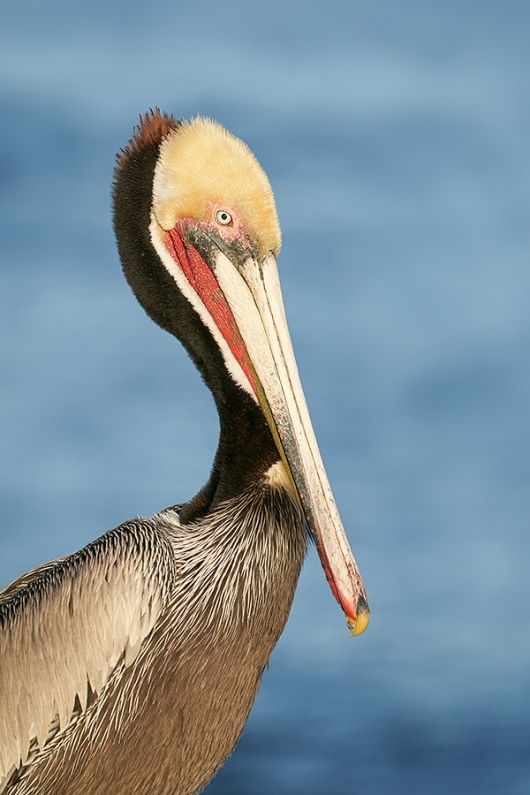
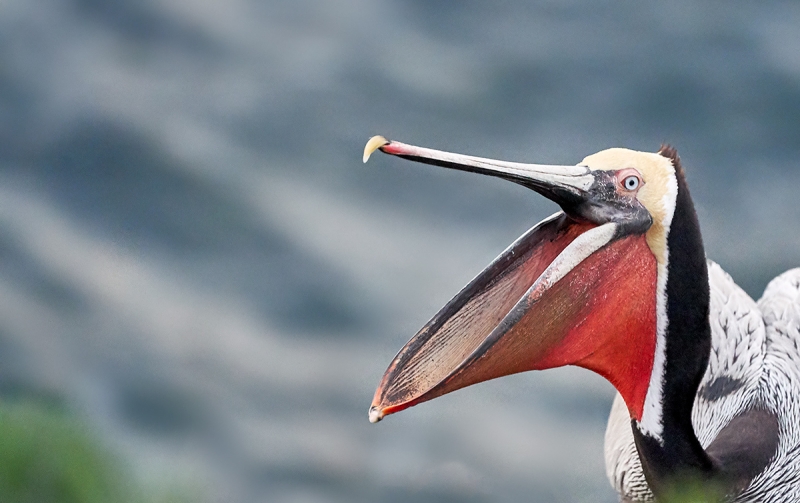
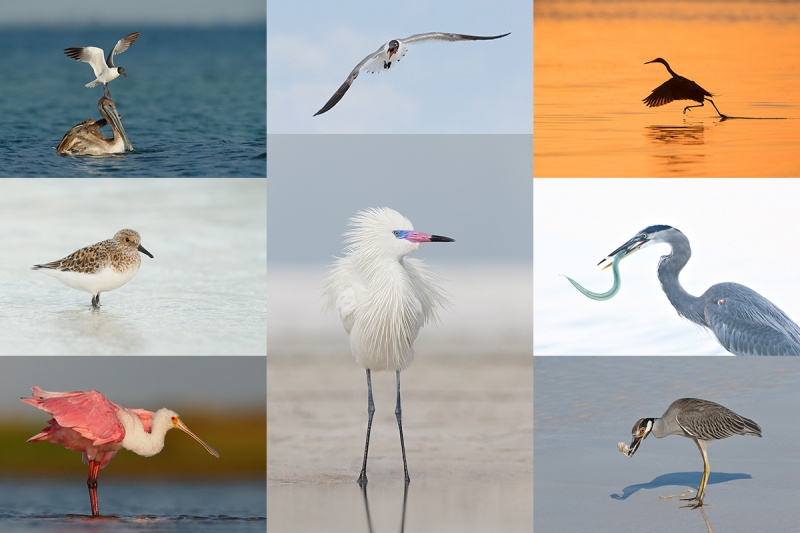
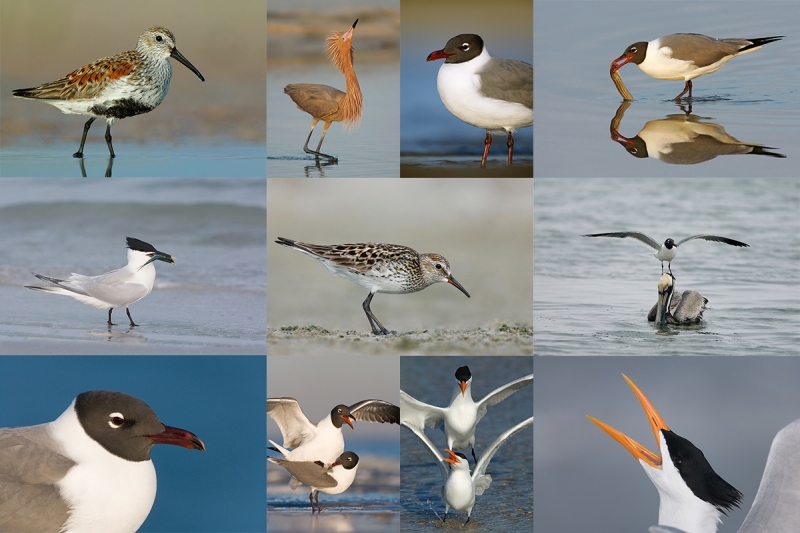
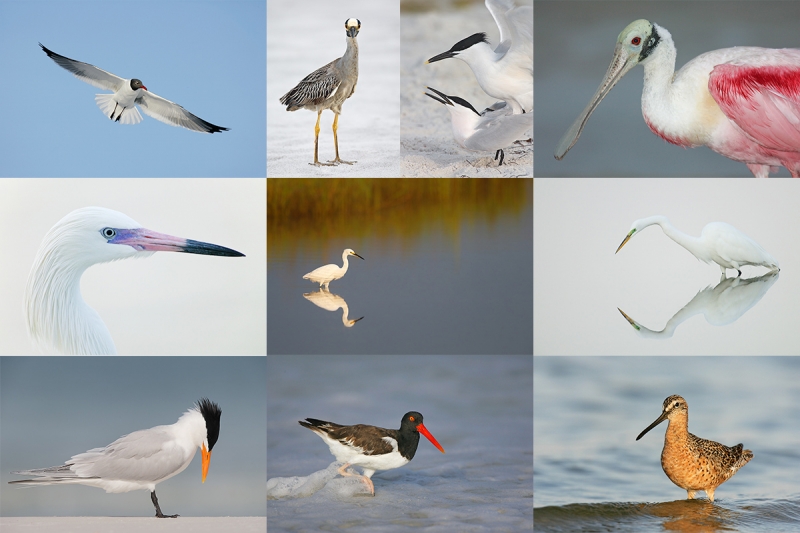
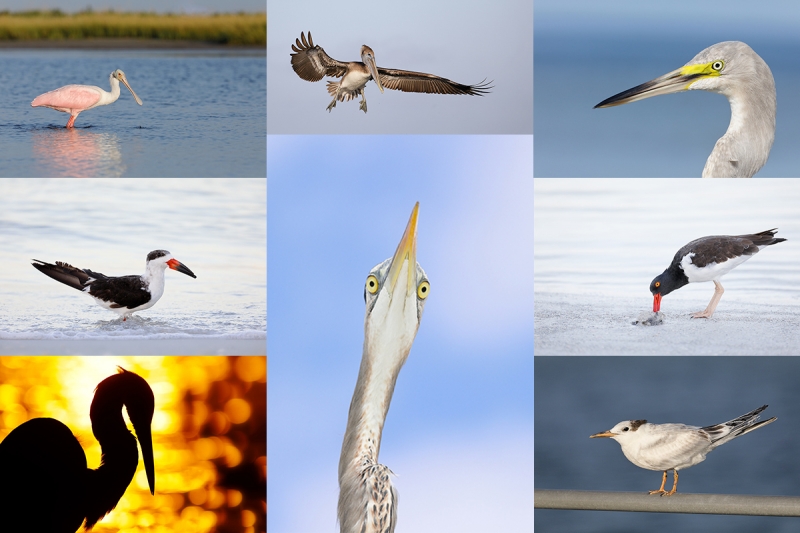














Hello Artie,
Help me decide. Sony a9 + TCs + 100-400mm, or IPT? : )
Best regards, Charles
Easy decision. Both. Come to DeSoto and you can try out my A9 and 100-400 🙂
with love, artie
For me, one of the outstanding advantages of mirrorless cameras is, as you mention, freedom from the acursed microadjusting of DSLR machines. Even with the best of aids, that task was a perpetual time and patience consuming pain in the neck ( or elsewhere.) However, the dust-on-the-sensor aspect is worrisome. Wonder if Sony will develop some sort of dust control mechanism as has Canon?
Right now, unable to use my DSLRs and tripods because of orthopedic issues, I am enjoying the lightweight Sony mirrorless RX 10 Mark 4 with its built-in 24-600 mm equivalent Zeiss lens. No dust problems and no microadjusting, and pretty good results for a ” bridge” camera. Fairly steep learning curve, but aided by an large and excellent third party instruction book by Alexander S. White.
Thanks as always Artie,
I’m curious about the listed settings on today’s second image.
It’s showing 560mm which is 400 x 1.4 so that makes sense. However, at 400mm that lens should be at f/5.6 wide open and, in my Nikon experience, with a 1.4 tele installed, that should put you at a minimum of f/8 (or I guess f/7.84 which my Nikon gear would round up to f/8).
My question is, do these Sony teleconverters manage to magnify without the standard loss of light and aperture?
Thanks,
-Phil
Hi Phil, Thanks for catching the left-over typo 🙂 Image 2 was made at 400mm.
You always lose one stop of light with a 1.4X TC and two stops with the 2X TCs. But both the AF performance and the image quality do not suffer. It is astounding.To me.
with love, artie
Ok, Thanks, Artie!
best,
-Phil
Good Morning Arthur,
I like the Pelican with its mouth open. Not that I don’t like the classic. I find the open mouth more interesting. And the tiny bits of green really set off the blue for me.
xoxoxox
Loren.
Arnie,
Here is something to ponder. There is an article in DPR (not always fully reliable lately) and I quote part from the CEO of Canon, “Canon thinks that the camera market will shrink another 50% over the next 2 years, which is changing some strategies at Canon on how to deal with the change in the marketplace.Canon’s camera sales have declined 10% a year over the last few years.The global market for interchangeable lens cameras is about 10 million units a year. Mirrorless camera sales are not adding to the market, they’re merely replacing DSLR sales…” DPR Comments I believe: “This is likely why Canon and Nikon waited so long to enter the full frame mirrorless segment. Putting forth the R&D to cannibalize yourself probably gets the bean counters in a tizzy…”
Now my speculation,” Now to your experience with Sony and lately Sony’s vastly af improvements with their lower end cameras and, perhaps the only company that can stand the tide of change and have money left over for much R&D in cameras is Sony especially since they only support mirrorless…maybe this is just foolish speculation on my part. I am a tried and true Canon shooter and hate to have to change to the dreaded hard to use and impossible Sony interface. Change is surely coming to the ICL camera business with declining overall sales. On the other hand, my cameras will continue to take as good a picture as I am capable of taking no matter what happens to the industry.
Interesting stuff. I would disagree on the SONY interface being difficult; my first image was a keeper …
artie
Hi Artie,
I have just spent a week in Finland photographing Golden Eagles.
The woman at the side of me was shooting Sony, and her Sony lens fogged up on the inside.
It was -18 Deg C, which is not cold for Finland.
Needless to say, her Sony was out of action for the rest of the day.
kind regards,
Ron
Thanks for that news. It is, however, unlikely that the brand of lens had anything to do with it fogging up.
with love, artie